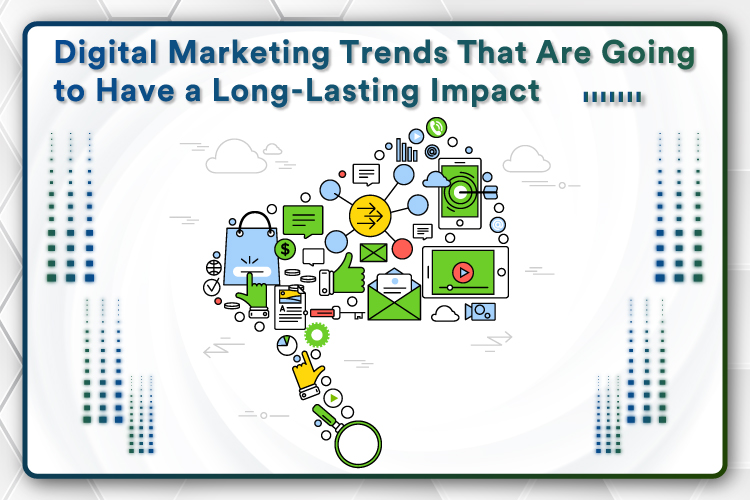Digital Marketing Trends That Are Going to Have a Long-Lasting Impact

As a result of the Coronavirus pandemic, customers have adjusted to the increasing environmental, economic, and political landscape changes. Like Google summarizes in its Covid-19 Ads Playbook; currently, we are seeing three major changes:
- Shock change – A sudden change in customer behavior that is not likely to sustain over time (such as an increase and decrease in searches around phrases like “Schools closing” when quarantine orders rolled out.)
- Step change – An unexpected change in behavior with the ability to stay (such as searches related to workout at home.)
- Speed-up change – A stimulation in behavior with the ability to stay (such as delivery related searches.)
As we navigate a reforming landscape, marketing teams must adapt all these types of trends in their digital marketing strategies to become successful. It is essential to realize that these rising trends are going to have a long-lasting impact on planning future strategy, especially in markets that have longer purchasing cycles.
Covid-19 pandemic has accelerated the following emerging trends that we believe are going to have a long-lasting impact on both customer behavior and digital marketing strategy.
Investing In Dynamic Creative Technology Platforms
Personalized marketing has been a rising trend in the industry for a while now, but it has been lagging in cost-effectiveness. For instance, an ad displaying a specific product like a party wear dress that you viewed earlier will outperform an ad with a generic product or brand image. However, designing a personalized ad for every instance is not cost-effective.
The latest Dynamic Creative Optimization (DCO) lets its users automatically build creative content with dynamic product display, assets, and language, without requiring an agency to pay an individual for each creative renderings.
In the near future, we believe we are going to see a dramatic increase in the use of such technology, eliminating the need to have human resources for ad creation. Moreover, platforms like Google Ads have improved their capabilities to make dynamic creative content, negating the need for multiple design repetitions. Leveraging machine learning in real-time enables data-driven results, eliminating the lead time for analysis and production. This pandemic has increased the demand for generating stacks of ads with less money and human resources to do so.
Abrupt Shift Of CPG Brands to E-Commerce
Consumer Packed Goods (CPG) brands need to adapt increasingly to the direct-to-consumer (DTC) environment to sustain in this market. The shift of demand from CPG to DTC has been accelerated due to the stay at home quarantining orders across the world.
People are actually enjoying this transition as they are finding it more convenient, economical and easy to shop online, where everything is available at their fingertips. We also believe that this shift to DTC will also influence consumers to shift from cable TV operators and print media to online streaming platforms.
An Exponential Growth In Digital Sales For Several Industries
As people are integrating digital in their everyday life, industries such as healthcare, groceries, food delivery, etc. have seen exponential growth. These sectors are seeing an immense increase in their digital sales as consumers adapt to their new life.
While this quarantining mode has made consumers discover new preferences and ways of living, specific sectors will remain as it is.
Conclusion
As the world is evolving and the consumers are adapting to the “new normal,” digital marketers need to reform their marketing strategies too in order to meet their target audience where they are now. This is the time where they must adapt as quickly as possible to remain in the competition and establish a strong digital footprint. Analyze and see where your brand stands today and what steps you need to take to make it relevant to the customers.
